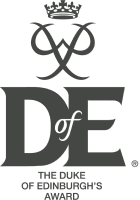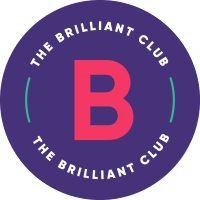This subject is part of the Faculty of Faculty of Humanities and Social Sciences
Our Head of Faculty is
Mr M Durham mdurham@tcat.school
Our subject teachers and email addresses are
Mr L Allen - lallen@tcat.school
Mr M Lake - mlake@tcat.school
Mr W Rees wrees@tcat.school
Our subject intent is
To study history is to study change: historians are experts in examining and interpreting human identities and transformations of societies and civilisations over time. Studying history helps us understand and grapple with complex questions and dilemmas by examining how the past has shaped (and continues to shape) global, national, and local relationships between societies and people. History is a fascinating subject, full of interesting people, places, events and colourful stories about the lives of others before us. Sharing our heritage is essential to the education of every child if we are to develop our students into mature, considerate adults, capable of forming their own opinions and making decisions about their life with surety and understanding.
Learning History has relevance for all pupils regardless of age, gender, ethnicity or ability. Provision is made for all students to be able to learn about History at Queen Elizabeth High School.
Curriculum Subject Offer
Year 7 History
Subject intent
In year 7 you learn about the Medieval period of history that focuses on the 11th to 15th century. You will learn about the importance of chronology in history and how to interpret sources and interpretations. You will then study why King Harold lost the Battle of Hastings, the events leading up to the murder of Thomas Becket and how the fighting during the Crusades remained the same over time. The end of the Spring term will focus on the strengths and weaknesses of Medieval monarchs, then, the Summer term starts with The Black Death and explaining why medieval physicians were unable to prevent or cure it. Lastly, you will identify the key features of migrants and settlers of the British Isles.
Topic Breakdown
|
|
Half term 1 |
Half term 2 |
|
Autumn |
The Norman Conquest | Religion in Medieval England |
|
Spring |
The Crusades | Medieval monarchs |
|
Summer |
The Black Death | Migrants and settlers |
You will be assessed at the end of each half-terms’ unit of work; regular summative assessments and waterfall assessments, source enquiries, a focus on each of the following – causation and consequence, analytical narrative, change and continuity and chronology.
History full Scheme of Work - Year 7
Year 8 History
Subject intent
In year 7 you learnt about the Medieval period of history that focused on the 11th to the 15th century. You learnt about the importance of chronology in history and how to interpret sources and interpretations. You then studied why King Harold lost the Battle of Hastings, the events that led up to the murder of Thomas Becket and how the fighting during the Crusades remained the same over time. The end of the Spring term focussed on the strengths and weaknesses of Medieval monarchs, then, the Summer term started with The Black Death and explained why medieval physicians were unable to prevent or cure it. Lastly, you identified the key features of migrants and settlers of the British Isles.
During Year 8 you will learn the period of history between 1485 and 1900. You will learn about the Reformation and the way religion changed over time, you will then understand why England erupted into civil war in 1642. During the spring term, you will learn about the advancements made during the Enlightenment and the changing power of parliament. The transatlantic slave trade is a key feature of study in Year 8 where you will attempt to discover the horrors of the middle passage, this will then lead on to the development of the British Empire and colonisation. Lastly, you will study the Industrial Revolution and the enormous, exciting changes that happened in Britain between 1750 – 1850.
Topic Breakdown
|
|
Half term 1 |
Half term 2 |
|
Autumn |
Challenges to the Catholic Church | The English Civil War |
|
Spring |
Changing ideas: 1660 to 1789 | The Slave Trade |
|
Summer |
The British Empire | The Industrial Revolution |
You will be assessed at the end of each half-terms’ unit of work; regular summative assessments and waterfall assessments, source enquiries, a focus on each of the following – causation and consequence, analytical narrative, change and continuity and chronology.
History full Scheme of Work - Year 8
Year 9 History
Subject intent
In year 8 you learnt about the period of history between 1485 and 1900. You learned about the Reformation and the way religion changed over time, you then understood why England erupted into civil war in 1642. In the spring term, you learnt about the advancements made during the Enlightenment and the changing power of parliament. The transatlantic slave trade was a key feature of study in Year 8 where you discovered the horrors of the middle passage, this then lead on to the development of the British Empire and colonisation. Lastly, you studied the Industrial Revolution and the enormous, exciting changes that happened in Britain between 1750 – 1850.
During Year 9 you will learn about the period of history between 1861 and 2011. You will learn about the development of democracy in Britain and eventually how the legal status of women changed. The second half of the autumn term focuses on allies and enemies and nationalist ideas that led to the outbreak of WW1, you will then be able to understand the events and consequences of the First World War, including trench warfare. The spring term continues the theme of conflict in the 20th century, starting with the Russian Revolution, then, the emergence of communism and fascism. The events of WW2 are also studied which then leads on to understanding the development of nuclear weapons and the Cold War. After analysing a century of war, you are ready to learn about the atrocities of the Holocaust, starting with a history of anti-Semitism. Finally, you will assess the long-term causes of conflict in the Middle East.
Topic Breakdown
|
|
Half term 1 |
Half term 2 |
|
Autumn |
Getting the vote | The First World War |
|
Spring |
Conflict in the 20th Century | The Holocaust |
|
Summer |
The Middle East | What’s the best way to bring about change? |
You will be assessed at the end of each half-terms’ unit of work; regular summative assessments and waterfall assessments, source enquiries, a focus on each of the following – causation and consequence, analytical narrative, change and continuity and chronology.
History full Scheme of Work - Year 9
Year 10 History
Subject intent
In year 9 you learnt about about the period of history between 1861 and 2011. You learned about the development of democracy in Britain and how the legal status of women changed. The second half of the autumn term focussed on allies and enemies and nationalist ideas that led to the outbreak of WW1, you understood the events and consequences of the First World War, including trench warfare. The spring term continued the theme of conflict in the 20th century, which started with the Russian Revolution, then, the emergence of communism and fascism. The events of WW2 were also studied which lead on to understanding the development of nuclear weapons and the Cold War. After analysing a century of war, you investigated the atrocities of the Holocaust, that started with a history of anti-Semitism. Finally, you assessed the long-term causes of conflict in the Middle East.
During Year 10 you will learn about Early Elizabethan England during the period 1558 -88. This topic focuses on knowledge and understanding; key features; causation; second order concepts (change, continuity, consequence, similarity, difference, significance); chronology. You will then move onto Superpower Relations and the Cold War during the period 1941-91 which will assess concepts including historical narrative; chronology; knowledge and understanding; consequence; significance; analytical narrative (describe what happened & analyse events to find connections that explain the way in which events unfolded). During the Summer term, you will begin studying Weimar and Nazi Germany during the years 1918 – 1939; this topic builds skills that include knowledge and understanding; causation; chronology; analysis and evaluation of contemporary sources; interpretations; evidence.
Topic Breakdown
|
|
Half term 1 |
Half term 2 |
|
Autumn |
Early Elizabethan England, 1558–88 | Early Elizabethan England, 1558–88 |
|
Spring |
Superpower relations and the Cold War, 1941-91 | Superpower relations and the Cold War, 1941-91 |
|
Summer |
Weimar and Nazi Germany, 1918–39 | Weimar and Nazi Germany, 1918–39 |
You will be assessed regularly using past papers, including homework assessments and at the end of each topic studied
History full Scheme of Work - Year 10
Year 11 History
Subject intent
In year 10 you learnt about about Early Elizabethan England during the period 1558 -88. This topic focused on knowledge and understanding; key features; causation; second order concepts (change, continuity, consequence, similarity, difference, significance); chronology. You then moved onto Superpower Relations and the Cold War during the period 1941-91 which assessed concepts including historical narrative; chronology; knowledge and understanding; consequence; significance; analytical narrative (describe what happened & analyse events to find connections that explain the way in which events unfolded). During the Summer term, you began studying Weimar and Nazi Germany during the years 1918 – 1939; this topic helped build skills that included knowledge and understanding; causation; chronology; analysis and evaluation of contemporary sources; interpretations; evidence.
During Year 11 you will learn a continuation of Weimar and Nazi Germany during the period 1918 – 39; this will focus on knowledge and understanding; causation; chronology; analysis and evaluation of contemporary sources; interpretations; evidence. You will then begin the topic, Crime and punishment in Britain, c1000–present, where you will learn how to analyse change & continuity; similarity and difference; significance; causation; consequence; key features; trends and turning points; key factors (attitudes in society; individuals and institutions [Church and government]; science and technology); chronology. The last section of the course is part of the Crime and punishment topic, Whitechapel, 1870-c.1900: crime, policing and the inner city, that will help you develop historical context; relationships between a place and historical events and developments; features; historical enquiry; analysis, evaluation and use of contemporary sources to make substantiated judgements.
Topic Breakdown
|
|
Half term 1 |
Half term 2 |
|
Autumn |
Weimar and Nazi Germany, 1918–39 | Crime and punishment in Britain, c1000–present |
|
Spring |
Crime and punishment in Britain, c1000–present | Whitechapel, .1870-c.1900: crime, policing and the inner city |
|
Summer |
Revision | Revision |
You will be assessed regularly using past papers, including homework assessments and at the end of each topic studied.
History full Scheme of Work - Year 11
Within each subject we have our own specific personalised marking and feeback policy.
|
HUMANITIES |
||
|
|
KS3 |
KS4 |
|
Verbal dialogue |
Teachers circulate with purpose, checking pupils’ work, marking if appropriate and collecting information on whole-class strengths, errors, misconceptions, knowledge gaps etc. The teacher adjusts their lesson accordingly. |
Teachers circulate with purpose, checking pupils’ work, marking if appropriate and collecting information on whole-class strengths, errors, misconceptions, knowledge gaps etc. The teacher adjusts their lesson accordingly. |
|
Self/peer assessment |
Written feedback through strengths/targets and annotations. Peer and self-assessment should be completed in blue pen. |
Written feedback through strengths/targets and annotations. Peer and self-assessment should be completed in blue pen. |
|
Whole Class Feedback |
When pupils complete extended pieces of writing, teachers will read through a sample of books from each class they teach and note pupils’ strengths and areas for development. Teachers will then use this information to provide whole class feedback on what pupils are doing well and how pupils can improve their work further. As this type of marking involves the teacher looking at a sample of books, the teacher will use a rotation system to ensure that the books of all pupils are looked at on a regular basis. |
When pupils complete extended pieces of writing, teachers will read through a sample of books from each class they teach and note pupils’ strengths and areas for development. Teachers will then use this information to provide whole class feedback on what pupils are doing well and how pupils can improve their work further. As this type of marking involves the teacher looking at a sample of books, the teacher will use a rotation system to ensure that the books of all pupils are looked at on a regular basis. |
|
Written comments |
Teachers within the department will either: 1. Read through the work of all pupils and use a marking code to indicate the strengths of the work and the areas for development. The marking code will be shared with all pupils and pupils will be given precise instruction about how to improve their work. OR 2. Read through the work of all pupils and write a strength comment and target comment at the end of the piece of work. SPAG Teachers will identify where pupils make errors in their spelling, punctuation and grammar and pupils will be given time in lessons to make corrections (by circling errors where SPAG mistakes appear). If several pupils in a class are making the same spelling, punctuation or grammar error then the teacher will address this with the class. |
Teachers within the department will either: 1. Read through the work of all pupils and use a marking code to indicate the strengths of the work and the areas for development. The marking code will be shared with all pupils and pupils will be given precise instruction about how to improve their work. OR 2. Read through the work of all pupils and write a strength comment and target comment at the end of the piece of work. SPAG Teachers will identify where pupils make errors in their spelling, punctuation and grammar and pupils will be given time in lessons to make corrections (by circling errors where SPAG mistakes appear). If several pupils in a class are making the same spelling, punctuation or grammar error then the teacher will address this with the class. |
|
Frequency of feedback |
Live feedback and responsive teaching will take place in most lessons where pupils have been asked to complete extended pieces of writing. Whole-class feedback will take place once a week or after two lessons. Peer/self-assessment When deemed to be the most effective method of assessing work produced in lessons Written comments will take place after between 10 and 15 lessons (around twice per term), as appropriate for the pace of the class. |
Live feedback and responsive teaching will take place in most lessons where pupils have been asked to complete extended pieces of writing. Whole-class feedback will take place once a week or after three lessons. Peer/self-assessment When deemed to be the most effective method of assessing work produced in lessons Written comments will take place after between 10 and 15 lessons (around twice per term), as appropriate for the pace of the class. |
|
Response to feedback |
When directed after marking/whole class feedback, pupils will be expected to make a response in blue pen. In some instances, pupils will be expected to put the title DIRT and either re-draft an entire piece of work or a section of the piece of work according to the teacher’s instructions. In other instances, pupils will be expected to apply their feedback to a different task under the title DIRT. This would be done in blue pen. In further instances, pupils may be asked to answer questions posed by the teacher. Responses to spelling mistakes include writing out misspelled words and listening to explicit teaching of spelling. |
When directed after marking/whole class feedback, pupils will be expected to make a response in blue pen. In some instances, pupils will be expected to put the title DIRT and either re-draft an entire piece of work or a section of the piece of work according to the teacher’s instructions. In other instances, pupils will be expected to apply their feedback to a different task under the title DIRT. This would be done in blue pen. In further instances, pupils may be asked to answer questions posed by the teacher. Responses to spelling mistakes include writing out misspelled words and listening to explicit teaching of spelling. |
|
Summative assessment |
1 x formal assessment usually each half term or at the end of a unit of work. A piece of extended writing or set of exam-style questions. Band boundaries are applied to the assessments once judged. |
1 x formal assessment usually each half term or at the end of a unit of work. A piece of extended writing or set of past paper examination questions. The most recent exam board examination boundaries available are applied to the assessments once judged. |






